Most Xfinity WiFi gateways, including the latest XB8, have a limited WiFi range. To expand the coverage, you can either use a WiFi extender or replace the xFi gateway with a third-party router or mesh WiFi.
While both have their perks and limitations, this article shall focus on WiFi extenders that work best with Xfinity. As for compatibility, you can pair any, but the performance can vary from device to device.
After four weeks of in-depth testing with various locations and scenarios, I have come up with the top 5 choices for 2024.
The selection was made based on signal quality, distance speeds, device handling ability, and stability, all to ensure that you get the best possible experience. Now, let’s dive into the reviews without any more delay!
Contents
1. Best Overall: TP-Link RE715X
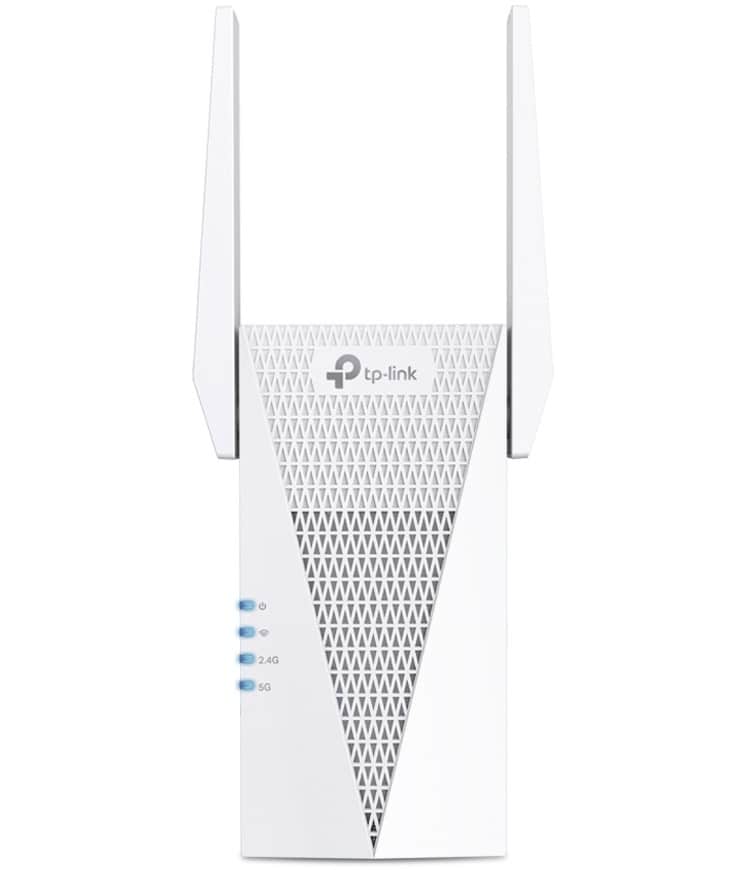
- WiFi Standard: Wi-Fi 6 (802.11ax)
- WiFi Range: Up to 1,700 Sq Ft
- Devices Capacity: 50
- Ports: 1 x Gig Ethernet
- App Support: Yes
If you seek a high-end future-proof extender, TP-Link RE715X is the one to get. With Wi-Fi 6 and AX3000 speed capacity, it’s excellent for your high-bandwidth activities like gaming, streaming, etc. Besides, it entails a OneMesh feature that pairs with any compatible TP-Link device for a seamless connection.
WiFi Coverage & Devices Capacity
Aside from seamless connectivity with its OneMesh tech, its two-antenna setup could send signals to a fair distance. As a single device, it covers a space with an area of around 1,550 Sq Ft.
Overall, with router + extender setup, my 2,500 Sq Ft lab was fully enveloped with powerful signals, and I could play on my Nintendo Switch sitting outside the office.
Besides, the device demonstrates the capacity of a decent connection, courtesy of its MU-MIMO tech. All the devices in my lab (20), including laptops, smartphones, and security cameras, could be connected simultaneously without any issues.
Speeds & Performance
The extender boasts a maximum theoretical speed capacity of 3000 Mbps, distributed over the two bands as follows:
| 5 GHz: 2402 Mbps | 2.4 GHz: 574 Mbps |
Such higher throughput makes it a viable companion for top-tier Xfinity connections such as Gigabit or Gigabit Extra.
I connected it to a TP-Link WiFi 7 router and my Dell laptop to measure the wireless performance. And it turned out excellent. In numbers, the download speed clocked 112 Mbps while the upload speed clocked 21 Mbps.
The consistency with the speed and signal quality is primarily due to its OneMesh compatibility, which spreads signals of equal strength throughout the space.
Besides, a smart roaming feature lets you experience uninterrupted streaming when moving around the home. And as with most extenders, you’ll find a Gigabit Ethernet port for uninterrupted gaming sessions.
The gaming performance received a major boost with ping values decreasing from 25 to 17ms, while frame rates stooping to 72 per sec from 60.
Conclusion
Overall, if you want the best possible wireless extender to use with Xfinity, TP-Link RE715X with Wi-Fi 6 and AX3000 throughput is my go-to recommendation. It’s a bit pricey for a WiFi extender, but its performance and reliability make it worth it.
- Dual-band Wi-Fi 6
- Excellent speeds
- Decent WiFi range
- OneMesh support
- Easy to set up
- A bit pricey
2. Best Runner-Up: ASUS RP-AX58
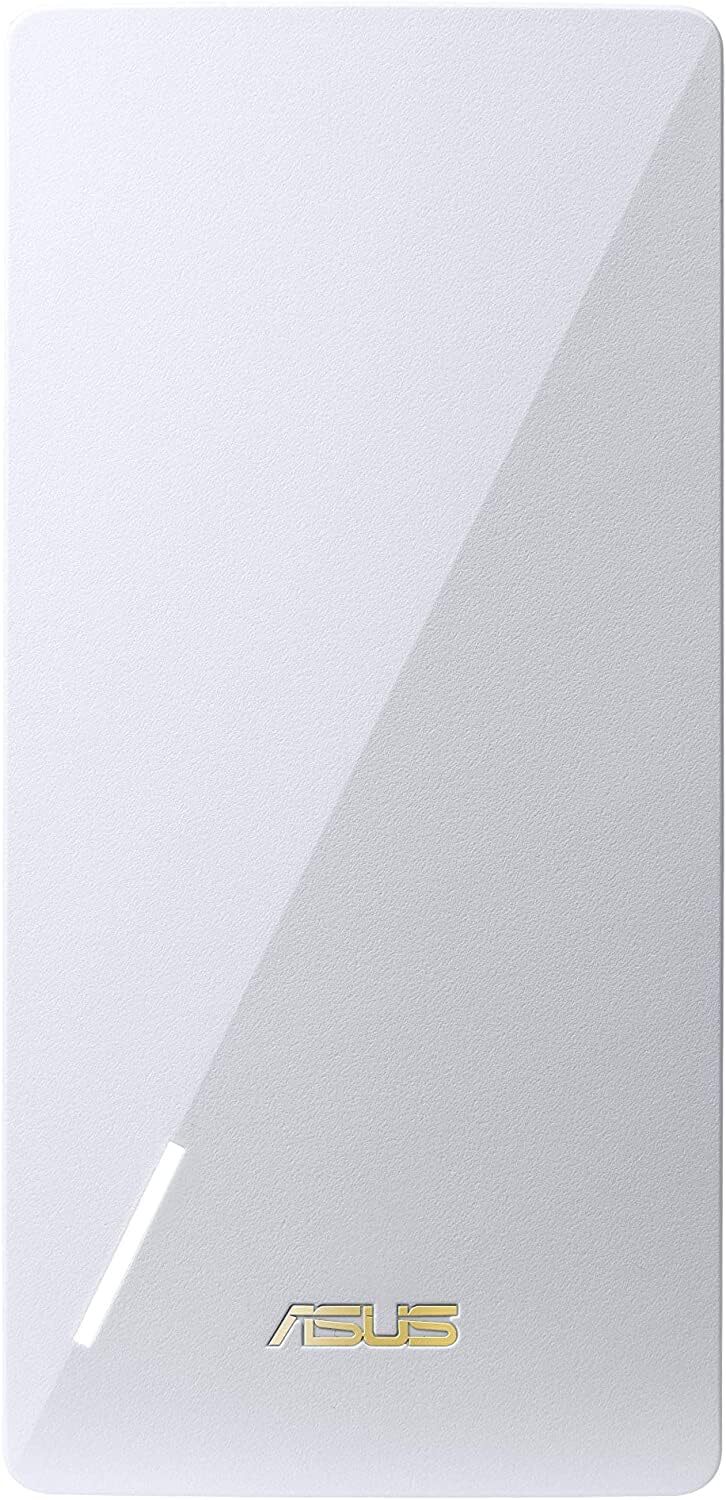
- WiFi Standard: Wi-Fi 6 (802.11ax)
- WiFi Range: Up to 2,200 Sq Ft
- Devices Capacity: 40
- Ports: 1 x Gig Ethernet
- App Support: Yes
Next on my list is another Wi-Fi 6 extender with the AX3000 speed rating. But compared to my top pick, the ASUS RP-AX58 boasts a higher WiFi range. Plus, there’s AiMesh tech support, enabling you with seamless connectivity.
But how does it turn out in real-life usage? Let’s find out!
WiFi Coverage & Devices Capacity
The two-antenna setup claims to cover a space of around 2,200 Sq Ft. In real life, irrespective of any obstructions and interferences, the numbers came out at 1,950 Sq Ft, which, combined with my router, breezed through my mansion-style house.
And thanks to its AiMesh capability, both networks work under a single name, and you don’t need to switch networks when roaming around the house. The extender intelligently connects you to the most powerful network.
The device also fulfilled my expectations when it comes to its device capacity. With MU-MIMO, I could connect 35 devices. Tasks like streaming, gaming, video calling, and surfing went well.
Speeds & Performance
ASUS RP-AX58 maxes out its throughput capacity at 3000 Mbps, with its band-wise speed distribution as follows:
| 5 GHz: 2402 Mbps | 2.4 GHz: 574 Mbps |
I had ASUS RT-AX88U installed in my home office, and the speed output with the extender installed in the kitchen was pretty decent. My tests recorded a download speed of 96 Mbps, while 19 Mbps for upload.
Combined with gaming-centric features on my router, such speed allowed me to play mid-tier games at a decent pace. Valorant and Destiny 2 ran at 1080p on my Dell laptop with a ping value staying in the range of 19-22ms.
Aside from that, an Ethernet port with a Gigabit speed lets you enjoy interruption-free wired connectivity.
Conclusion
Overall, the ASUS RP-AX58 is one of the top choices for gaming. The higher throughput and Wi-Fi 6 add up to the performance. I also liked its signal strength. For less than $100, it’s a steal deal.
- Wi-Fi 6 support
- Convenient design
- Excellent coverage
- AiMesh support
- Decent speeds
- A bit pricey
3. Best for Long Range: TP-Link RE650
If you have a large space with a lot of network drops and throttles, especially in the garage, backyard, or kitchen, opt for this device.
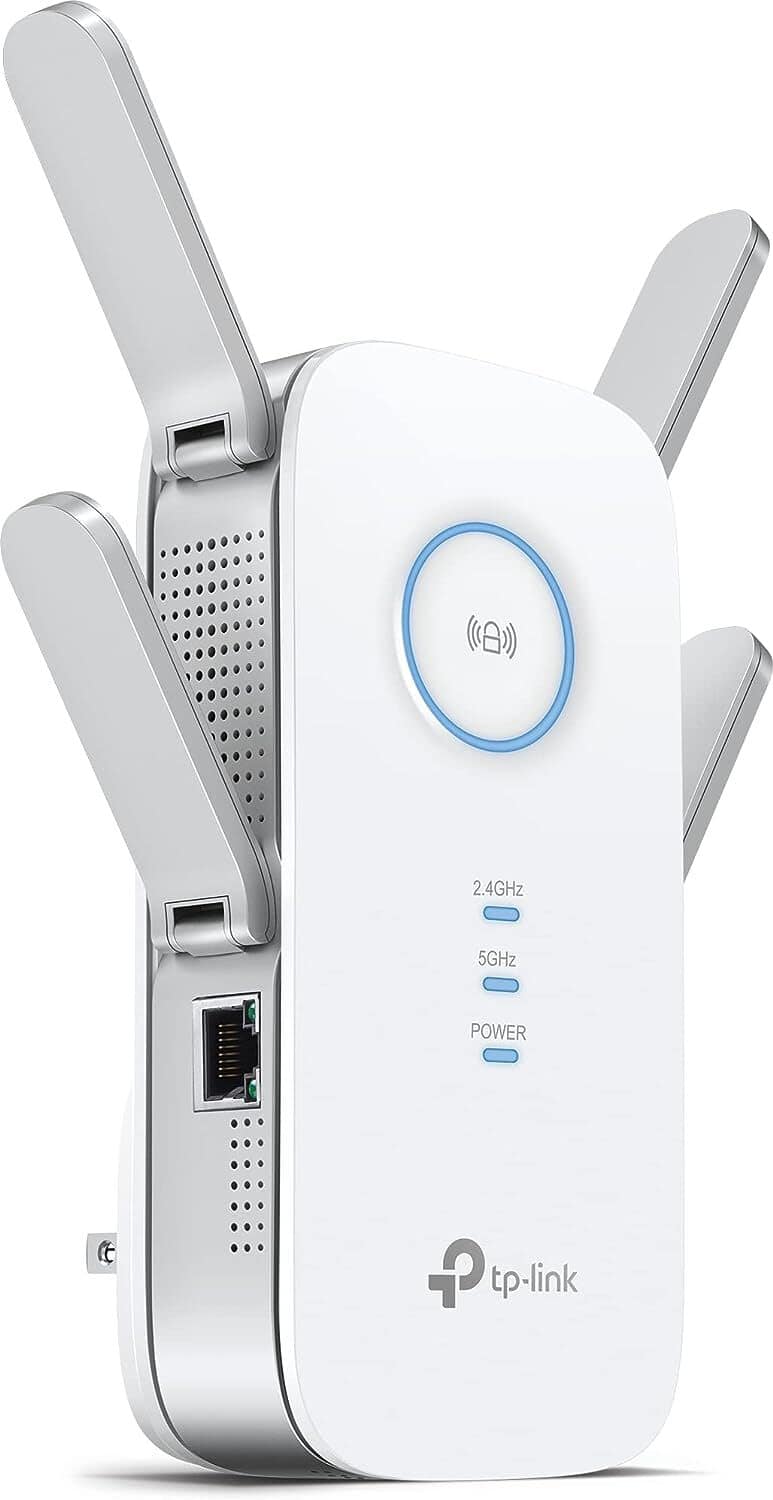
- WiFi Standard: Wi-Fi 5 (802.11ac)
- WiFi Range: Up to 14,000 Sq Ft
- Number of Devices: 50
- Ports: 1 x Gig Ethernet
- App Support: Yes
TP-Link RE650 leaps forward in every aspect from its predecessor, RE550. It excels in speed, coverage, and device-handling capacity. Another notable feature is OneMesh compatibility, which creates a mesh-like network with TP-Link routers.
WiFi Coverage & Devices Capacity
Being one of the longest range extenders, it well justifies its price. Although the networking company makes an improbable claim of covering around 14,000 Sq Ft at a stretch, its results aren’t very far away from it.
In my tests, courtesy of four antennas, it covered almost a 4,900 Sq Ft area, which, combined with any decent router, should cover any of your large space.
A feature that saw a massive improvement over its preceding model is its OneMesh support. Paired with any compatible router, you will surely get powerful signals even through walls.
But here’s a catch, this feature gets relevant if you own a OneMesh-supported router and works as a traditional extender with others. It means a speed drop and increasing chances of potential signal drop here and there, but it won’t affect its coverage.
It also integrates MU-MIMO, which boosts its device handling ability. At a stretch, I could connect 34 devices and indulge in multiple tasks.
Speeds & Performance
TP-Link RE650 boasts a maximum throughput capacity of 2600 Mbps, which is distributed over its two bands as follows:
| 5 GHz: 1733 Mbps | 2.4 GHz: 800 Mbps |
Such speeds make the wireless extender ideal for homes with mid to fast Xfinity plans (800 Mbps to 1000 Mbps). It also works with entry-level plans, but that wouldn’t be a smart choice.
Connected to Gigabit Extra plan & TP-Link Archer AXE75 router, the extender measured decent download and upload speeds.
In numbers, the download and upload speeds were recorded at 83 Mbps and 16 Mbps, respectively. Plus, there weren’t any instances of network jitters or inconsistencies, despite being kept under stress test by running 4K streams simultaneously.
So, all your bandwidth-intensive activities are under check with this installed. If you seek higher speeds, an Ethernet port with Gigabit capacity comes in handy.
Conclusion
Overall, TP-Link RE650 is a great long range extender for your Xfinity connection. Its USPs are higher throughput and signal strength. It’s compatible with all existing routers, but its OneMesh feature works only with TP-Link routers.
- Exceptional coverage
- Great speeds
- Decent device-holding capacity
- OneMesh compatible
- Wi-Fi 5 standard
4. Best for Home Use: Linksys RE7000
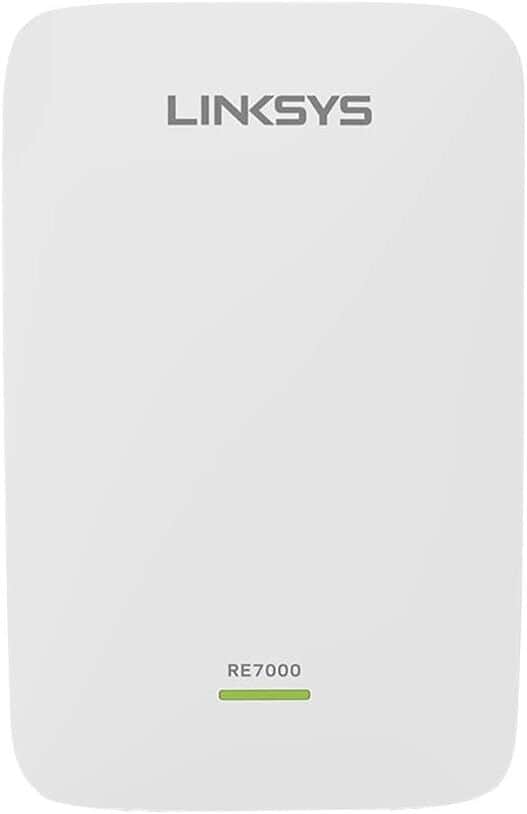
- WiFi Standard: Wi-Fi 5 (802.11ac)
- WiFi Range: Up to 2,500 Sq Ft
- Number of Devices: 30
- Ports: 1 x Gig Ethernet
- App Support: Yes
Linksys RE7000 performed decently well in my tests, taking a few steps ahead of the preceding model, Linksys RE6300. So let’s discuss in detail what more this extender has to offer.
WiFi Coverage & Devices Capacity
Its signal range isn’t as extravagant as my previous pick, but with its two external antennas, claims a WiFi range of 2,500 Sq Ft, the second highest in the list.
In real life with interferences and obstructions, the values fared at 2,200 Sq Ft, so my devices had a two-bar signal even in the garden. My Nintendo Switch could run basic online games with ease.
Moving on, the device demonstrates the capacity of a decent connection with the integration of MU-MIMO, making a networking device focus its signals on a single device rather than spreading them around.
Regarding working on light network-bound activities like sending emails, surfing the web, and streaming HD music, 28 devices work fine. While the number comes down to 24 when active on bandwidth-intensive tasks like gaming, streaming, and others. This should be enough for any of your small businesses.
Speeds & Performance
The dual-band Wi-Fi 5 setup entails a maximum throughput capacity of 1900, with its band-wise speeds represented as:
| 5 GHz: 1300 Mbps | 2.4 GHz: 600 Mbps |
In my speed tests with the Linksys Hydra Pro 6 router, the RE7000 produced decent mixed results. As there isn’t any mesh tech, there was a massive speed drop as with the routers, but the signals stayed stable and consistent. Number-wise, the downloads clocked at 89 Mbps, while 17 Mbps was the upload speed.
I further put the extender under stress by streaming UHD movies on multiple devices simultaneously. There were some minor inconsistencies here and there, which is quite standard in repeaters, but my family enjoys the movies without many issues.
Nevertheless, if you need a lag-free connection and much faster speeds for your games to run smoothly, try connecting your gaming console to the Gig ethernet port.
Conclusion
Linksys RE7000 is a good WiFi extender for Xfinity routers that lets you extend the coverage outdoors. It delivers decent throughput performance and features MU-MIMO technology, which enables stable signals to multiple devices simultaneously.
However, the absence of an instruction manual could make installation challenging for new users.
- Decent device holding capacity
- Long wireless range
- Supports MU-MIMO
- Solid throughput results
- A bit difficult to set up
5. Best Value for Money: Tenda A33
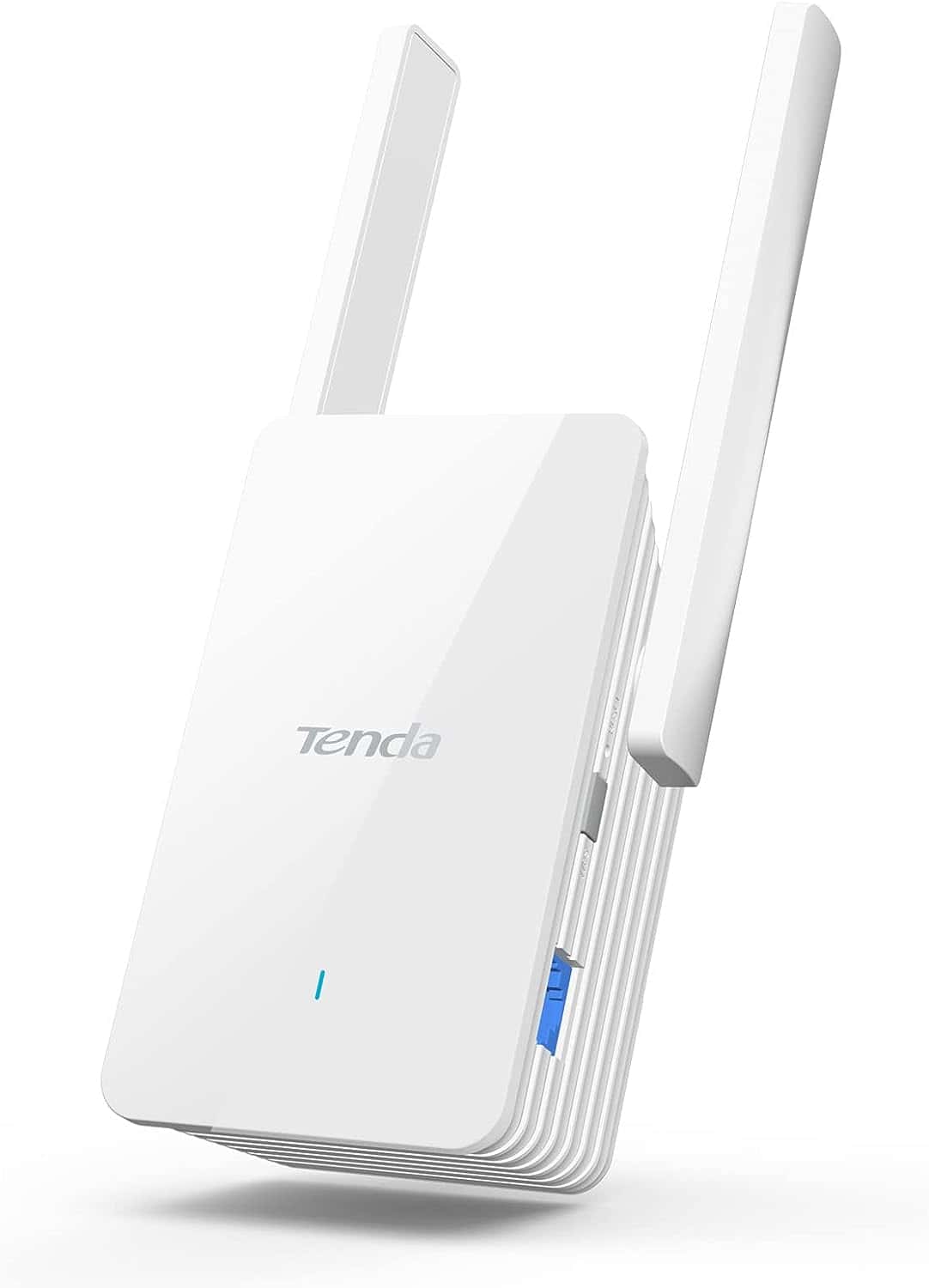
- WiFi Standard: Wi-Fi 6 (802.11ax)
- WiFi Range: Up to 2,100 Sq Ft
- Number of Devices: 20
- Ports: 1 x Gig Ethernet
- App Support: Yes
If you are in a quest for a good affordable WiFi extender with Wi-Fi 6, Tenda A33 is the one to go for. At around $70, it entails dual-band WiFi, 3000 Mbps of total speed capacity, powerful antennas, and the ability to handle multiple devices.
WiFi Coverage & Devices Capacity
Its two external antenna setup makes its theoretical speeds capped at 2,100 Sq Ft in ideal settings. However, testing it in a two-walled space, its range wasn’t far away, with numbers raking up to 1,900 Sq Ft.
Now, the enveloped space was entirely covered with decent strength signals, and courtesy of MU-MIMO tech signals over multiple devices stayed stable.
I could connect around 16 devices at a stretch, with each engaged in mid-tier tasks like HD streaming, sending emails, and casual gaming.
Speeds & performance
Tenda A33, with its Wi-Fi 6 support, boasts an oversized throughput capacity of 3000 Mbps distributed over its two bands as follows:
| 5 GHz: 2401 Mbps | 2.4 GHz: 574 Mbps |
With such a huge throughput value, it seems fair to pair it with the Tenda RX9 Pro my friend got installed in his space. I got the Xfinity Blast to test the internet speeds through the extender, and the results were decent.
Connected to my Dell laptop, the download speeds stayed at around 78 Mbps. At the same time, uploads fared at 15 Mbps.
Aside from basic tasks like internet surfing, streaming HD music, and sending emails, the available speeds should let you engage in casual gaming and HD streaming. But there were major lags with games like Warframe and Destiny 2.
But if you seek lag and interference-free gaming, there’s an Ethernet port with a Gigabit speed capacity. The ping values digressed to 15ms from 35ms while the frame rates increased to 52ms from 30ms, which translates to quality performance.
Conclusion
To sum up, the Tenda A33, with top-tier features like massive throughput capacity and decent WiFi range, makes it the best value option. This makes the device ideal for people working from home, online studying, and music lovers.
But its below-par device handling capacity and lesser speed output have pushed it down to the sixth position.
- Massive throughput capacity
- Decent coverage
- MU-MIMO
- Budget-friendly
- Less device handling capacity
Frequently Asked Questions
Yes, there isn’t any compatibility quotient of a WiFi extender with an Xfinity router, but it is with a router. A few extenders pair and work only with certain routers.
No, currently, there isn’t any official AT&T WiFi extender that is compatible with Comcast Xfinity. Even the service providers don’t recommend you try out this connection.
Here are a few easy steps for you to follow:
– Start by plugging the extender into a power plug near the router.
– Then press the WPS button on the extender and the router simultaneously. Carry out this step for the number of bands your extender and router support.
– Then move the extender to an ideal spot that’s not too near or far away from the router.
– When the connection is established, a green indicator light turns on the extender. The light stays green if the connection is good and red if bad. You should consider bringing it closer to the router in the latter case.
WiFi extenders are devices that extend the already present WiFi network in case a signal drops and take the signals to a long distance. It’s installed between the router and the connected device. On the other hand, it’s established on the router itself and acts as an antenna to make it more powerful.
Verdict
Setting up an extender with Xfinity Internet is as painless as possible, but some might lack an instruction manual. I hope my provided recommendations will let you make an informed choice. If you still can’t, here’s my curated list:
- If you are more concerned about higher speeds and lower latency, TP-Link RE715X should be your ideal pick.
- If you want extensive coverage, TP-Link RE650 is your best bet.
- Next, for those with a limited budget but exceeding expectations, Tenda A33 is what I recommend.
And with that, I conclude my guide. Please share in the comments which extender you chose and your experience with it. You’re also welcome to ask any questions below.

Great article, Kurt. Thank you!
My issue stems from an app that I need to run my Mitsubishi mini split HVAC system by the name of Kumo Cloud. Kumo can only communicate on a 2.4 GHz channel, but my Xfinity router (latest version) and xFi pod creates a mesh network that does not allow me to split my 2.4 GHz channel and my 5.0 GHz channel. I’m trying to find a solution to this long-standing problem which renders my Kumo app unreliable.
Mitsubishi engineers old me to get a single channel (2.4 GHz) router (I bought a TP-Link TL-WR940N) and plug it into my Xfinity router using an Ethernet cable. I did this and things worked fine for a couple of days, but my Xfinity network started to act up and has subsequently disappeared. I’m working with an Xfinity rep now to restore my home mesh network after disconnecting my new 3rd party router that Mitsubishi advised me to buy.
My other option that the Xfinity rep I’m working with now is to install a range extender (I have an old Netgear EX6100 that I intend to use) and (I assume) to only broadcast its 2.4 GHz signal to which I will attempt to connect my Kumo app. I did try this route before contacting Mitsubishi and getting the above advice, but it didn’t work then. I’m hoping the Xfinity rep I’m dealing with now will get it to work now.
If using a range extender doesn’t work, I suppose my last option will be to see if Xfinity will allow me to operate a totally separate internet service in my home using only a 2.4 GHz channel.
This has been a incredibly frustrating problem that has gone on for nearly 4 years. I am amazed that Mitsubishi has not updated their Kumo app to be compatible with today’s home mesh networks. I am equally as amazed that Xfinity does not have an easy solution since my research indicates that there are many apps in use today that require exclusive use of a 2.4 GHz channel.
I would greatly appreciate any advice you may have that will correct my problem.
Thank you in advance!!!
Hey Kevin,
All the solutions you tried are relevant, and the range extender one should solve your problem.
It’s sad to know that these companies can’t get over such a simple compatibility issue even today.